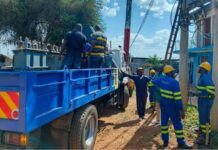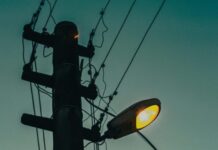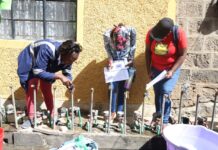A three-year-old lion is currently being nurtured and rehabilitated at the Stedmark underwent a vasectomy procedure at the KWS Veterinary Laboratory in an effort to control breeding at the captive facility.
One of the key activities undertaken by the Service through the Veterinary, Captive & Capture Services department in collaboration with the species programs is the rescue of animals in distress, orphans, and injured wild animals.
The animals are nurtured & rehabilitated in captive facilities. However, noting that when wild animals are hand-reared, they lose their natural instincts and if released back into the wild, they are vulnerable. The cat family ends up being problem animals as they look for easier prey.
As such, the wild animals kept in captive facilities are given the best conditions and utilized as exhibits to enhance local tourism, conservation education, and awareness for schools and the general public. Breeding is not permissible in captive facilities.
Appropriate management interventions such as vasectomy are undertaken using the recommended best practice to ensure animal welfare is enhanced.
The main threats to lion conservation include human-wildlife conflict leading to injury and retaliatory killing, increased human settlement and infrastructure development in wildlife habitats leading to increased interaction between people and wildlife, habitat loss, and fragmentation.
declining wildlife populations which affect predator-prey dynamics, impacts of climate change occasioned by frequent and prolonged drought, diseases, and lack of clear land use plans leading to poor conservation management strategies.



















